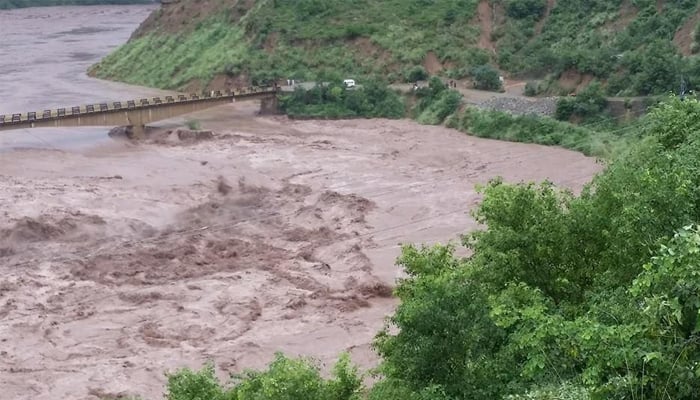INSUBCONTINENT EXCLUSIVE:
As climate risks grow, Azad Kashmir boosts emergency plansMUZAFFARABAD: When major floods hit Azad Kashmir in
2016, Jawad Hussain, a worker at the local government disaster agency, had to wait hours to receive updates on what kind of help was needed
and where.The delays meant families were left without aid for days, he said, as flooding forced thousands from their homes and left others
respond to disasters, including in the Kashmir region, which is prone to deadly floods, drought, landslides and earthquakes.Last August, the
government set up emergency response centers across the region, in part to speed the flow of information to the National Disaster Management
Authority, a federal body that issues early warnings, organizes rescue services, and distributes aid.There have been no major disasters
emergency response centers have their own wireless radio frequencies to more easily receive direct updates on floods, earthquakes and other
Jhelum valley district.MORE DATA, MORE PLANSKashmir - like some other areas of the country - is also working on the ground to cut risks from
natural disasters.Last year, the World Bank lent Pakistan $125 million to restore flood protection infrastructure and strengthen government
institutions to manage disasters and climate vulnerability across the country.In Kashmir, the government has now carried out studies to
determine the types of disasters each area faces, so that officials can better prepare, said Atiq-ur-Rehman Abbasi, project director of the
of people living by a river in Kotli district, where part of a suburb washed away in 2014 river flooding, Abbasi said.Sajjad Hashmi, a
banks, so a protection embankment could be helpful
Kotli resident, said the city has been vulnerable to river flooding for decades, but there had been no concrete protection efforts taken by
development department, said establishing dedicated centers to monitor the impacts of a changing climate and develop ways for the region to
adapt is a step in the right direction.But the real test is whether other departments - such as the forestry department, charged with
and can cut the risk of flooding, landslides and other problems as forested land absorbs more water and holds soil in place, he said.For
change, monsoon rains are shifting slowly toward the Neelum Valley, a tourist hotspot, Shah said
Protection Agency, said such data is hugely needed in a country that ranks seventh in the list of the 10 most climate change vulnerable

